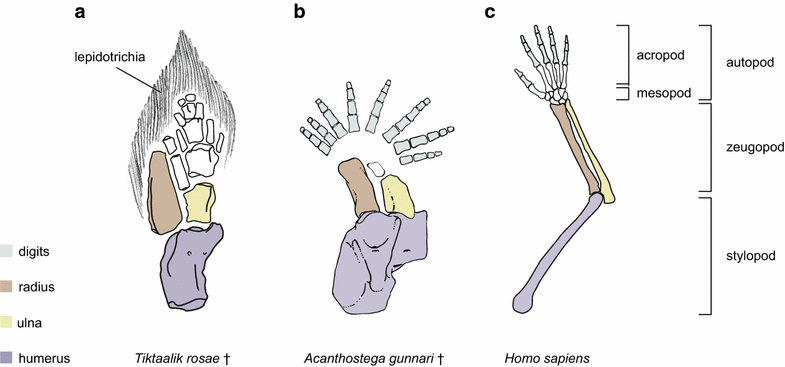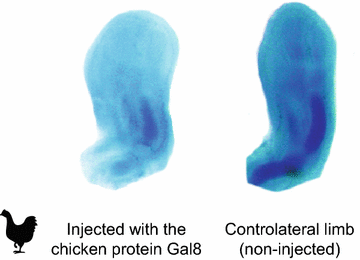The evolutionary origin of digit patterning
- PMID: 29201343
- PMCID: PMC5697439
- DOI: 10.1186/s13227-017-0084-8
The evolutionary origin of digit patterning
Abstract
The evolution of tetrapod limbs from paired fins has long been of interest to both evolutionary and developmental biologists. Several recent investigative tracks have converged to restructure hypotheses in this area. First, there is now general agreement that the limb skeleton is patterned by one or more Turing-type reaction-diffusion, or reaction-diffusion-adhesion, mechanism that involves the dynamical breaking of spatial symmetry. Second, experimental studies in finned vertebrates, such as catshark and zebrafish, have disclosed unexpected correspondence between the development of digits and the development of both the endoskeleton and the dermal skeleton of fins. Finally, detailed mathematical models in conjunction with analyses of the evolution of putative Turing system components have permitted formulation of scenarios for the stepwise evolutionary origin of patterning networks in the tetrapod limb. The confluence of experimental and biological physics approaches in conjunction with deepening understanding of the developmental genetics of paired fins and limbs has moved the field closer to understanding the fin-to-limb transition. We indicate challenges posed by still unresolved issues of novelty, homology, and the relation between cell differentiation and pattern formation.
Keywords: Development; Fin; Genetics; Novelty; Self-organization; Turing.
Figures


References
-
- Coates MI, Clack JA. Polydactyly in the earliest known tetrapod limbs. Nature. 1990;347:66–69. doi: 10.1038/347066a0. - DOI
-
- Lebedev OA, Coates MI. The postcranial skeleton of the Devonian tetrapod Tulerpeton curtum Lebedev. Zool J Linnean Soc. 1995;114:307–348. doi: 10.1111/j.1096-3642.1995.tb00119.x. - DOI
-
- Branch TA, Abubaker EMN, Mkango S, Butterworth DS. Separating Southern blue wale subspecies based on length frequencies of sexually mature females. Mar Mammal Sci. 2007;23:803–833. doi: 10.1111/j.1748-7692.2007.00137.x. - DOI
Publication types
LinkOut - more resources
Full Text Sources
Other Literature Sources

